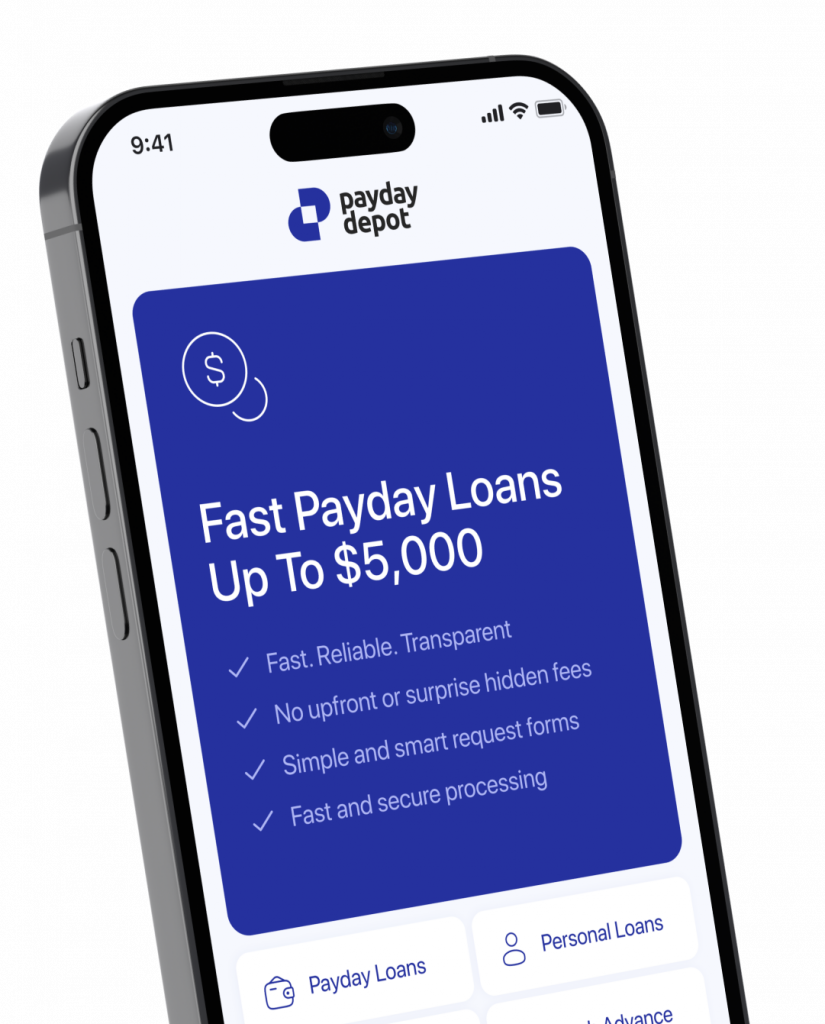Moriah Joy Chace has her own style of writing. She is a finance writer, coach, and Poorer Than You’s Making Do editor-in-chief. With a degree in English — Professional Writing, she crafts personal finance articles, coaches on money beliefs, and offers brand content strategy. Read more
Personal Loans Online, Best Online Loans
If you’re in a place where you need more money than you have, taking out a personal loan can help you build a back porch, replace a furnace, or cover damage to your personal property. Some personal loans even help you pay for your wedding. They’re a great tool when you use them wisely.
What Is a Personal Loan?
A personal loan is money that you borrow from a financial institution such as a bank or credit union, with consistent monthly payments and terms. The loan could carry high or low interest, depending on your credit score, but the interest rate usually doesn’t vary throughout the duration of your loan.
Most personal loans are unsecured, and can be used toward a variety of different expenses depending on the terms of your loan agreement. The better your credit score, the more banks are willing to lend you and at better rates. If you have bad credit, you might be looking at a high interest rate, making the loan more expensive.
When you take out an unsecured loan, the financial institution is loaning you money without holding onto something of value that belongs to you, with the understanding that you will pay back the money you owe in the future by the agreed-upon date.
An unsecured loan does not require that you put down any valuable assets, called collateral, in order to borrow the money. Collateral is a tangible asset of value such as a car or house, that the bank can repossess if you’re unable to pay back the loan.
Most loans must be paid off within one to seven years, depending on the terms and conditions of the loan. Before getting a personal loan, make sure you can pay back the amount you owe. Being unable to pay back the loan could negatively affect your credit score, and make you unable to qualify for another loan in the future. Negative credit also affects housing opportunities, and can potentially impact where you are able to work.
How Do Personal Loans Work?
Not paying back a personal loan can seriously jeopardize your future finances, so think carefully before pursuing one. The first step is to understand how personal loans work before you decide to pursue one.
First, you’ll have to apply for the loan by completing an application. Then you’ll have to wait for approval. While waiting for approval is usually the hardest part, you’ll generally hear back from most lenders today within a few hours or days. If you use an online lender, you might hear back sooner than you would from a brick-and-mortar financial institution, although that isn’t always the case.
Once you’re approved, the process is pretty seamless. Your lender will deposit your loaned funds into a bank account of your choosing, after which you can start using the funds for their intended purpose.
After you receive the loaned money, you’ll have to start paying it back in installments right away. Make sure you can pay back your loan on time, because your lender will likely report the payments to the three different credit bureaus. These reports are part of how your credit score is measured. By making on-time, in-full payments to your personal loan, you can build a positive credit history and increase your credit score.
Not all loan funds can be used for any expense, so check with your lender to ensure you can use the money you borrow for its intended purpose. For instance, a mortgage is a type of personal loan that is meant to help you purchase a home, so you can’t blow that money on a sleek race car instead.
Components of a Personal Loan
When you pay back the loan, you aren’t just paying back the money you borrowed. You’re also taking into account any interest that the loan has, its origination fee, and other components. Here’s a breakdown of what fees typically go into a personal loan.
Interest Rate
Banks charge interest in order to make lending profitable. Interest is the money it costs you to borrow the loan, and is determined by your credit score and how much money you’re borrowing.
Personal loans typically charge a fixed annual percentage rate, or APR, which measures much interest the bank will earn from you each year. If a loan has a 12% APR, that means you’re paying 12% of the loaned amount in addition to what you already owe each year.
Origination Fees
Origination fees are another way that banks and financial institutions make their money off of personal loans This is the amount of money that it costs to get the loan up and running.
Origination fees vary and, unlike interest, they aren’t collected every year. Instead, you’ll see an origination fee as a one-time addition to the loan. Not every bank charges an origination fee, but among those who do, it’s common to see origination fees for as much as 10% of the purchase price of the loan.
So if you are receiving a loan for $10,000, your origination fee is going to be $1,000. You don’t have to pay that fee upfront; instead, the lender will tack it onto your loan repayment terms so that your full debt would be $11,000, even though you only have access to the $10,000 you borrowed. You’ll pay interest on both the loan amount as well as the origination fee.
Repayment Terms
A personal loan is going to come with something called repayment terms. These are the terms on which you repay your loan. Commonly, you’ll see shorter repayment terms on smaller loans and larger repayment fees on longer term loans.
Usually, repayment terms last between one and seven years. But if you’re taking out $100,000, you might have a repayment term of 12 years or longer because the amount is so large. Ultimately, the lender determines the repayment terms, and you have to abide by them so read the fine print carefully before you agree to any personal loan.
Monthly Payment
All of the fees mentioned above, in addition to the principal you borrowed, gets bundled up into a neat monthly payment, which is the fixed repayment amount you’ll see in your contract when you agree to the loan. Every fixed payment is specific to the loan itself, so there isn’t a general range of monthly payments. Instead, your monthly payment is calculated by adding up the principal and interest across the life of the loan.
Typically, your monthly payment is going to be lower if you agree to longer terms on the loan. The trade off for this is that you’re going to pay more in interest for the privilege of having that shorter repayment period.
A Note About Interest Rates
Interest rates are determined based on several different factors including your credit score, annual income, debt to income ratio, and payment history.
If you have a great credit score — above 700, for example — you’re going to be able to get the best interest rates for your money. This score tells lenders that you’re a person who takes paying back financial institutions seriously, and you will be rewarded for that trustworthiness.
On the flip side, if you have a low credit score — say below 580 — you’re unlikely to have a lender offer you money. And if one does offer you a loan, the interest rate offered will likely be very high. Since your credit score suggests that you may not manage credit responsibly, you’ll have to pay more in interest and fees to receive the same loan amount as someone with excellent credit would pay.
Your annual income is also a factor. Lenders want to make sure that you have a source of steady and reliable income. If you don’t, they’re less likely to lend you money because they want to ensure that you’re able to pay back the loan. The more money you make, the more likely you’ll be able to secure a loan.
After the bank or financial institution evaluates your annual income, they’re going to compare that amount against your debt. This comparison is called a debt-to-income ratio.
The lower your debt-to-income ratio, the more likely you are to be approved for a loan. If you have too high of a debt-to-income ratio, you’re going to be denied a personal loan. This is because the bank assumes you have more cash at your disposal when you have less debt, and banks are interested in ensuring they can get their money back.
Finally, your payment history is important to lenders. They want to see you making timely payments in full to previous lenders before they’ll lend you money. As always, banks have a vested interest in a positive return on their investments. If you haven’t previously had a good record of repaying past lenders, you might be turned down for a loan.
How To Apply for a Personal Loan
First things first: Make sure you’re applying for a loan that is right for you. If you’re applying for a personal loan to get a car, you might want to reach out to different lenders who specifically provide auto loans in order to get the best interest rate available to you. Auto and home improvement loans are collateral loans, and will have lower interest rates. But if you need a personal loan for in-vitro fertilization, for example, you’ll need to do an unsecured loan, because a lender can’t tether your loan to any form of collateral.
What To Consider Before Applying for a Personal Loan Online
You don’t want to apply for a loan before doing your homework. Here’s what you should consider before applying for a loan:
How Much Will the Loan Cost You?
If you cannot afford the loan, and we cannot stress this enough, then do not get the loan. If you’re unsure if you can afford the loan, then use an online calculator to see if you can afford the terms of the loan. Make sure you factor in an accurate interest rate when using the online calculator. A few points in interest can drastically change how much you’re paying over the life of the loan.
Is This the Right Course of Action?
Be completely sure that there aren’t better options out there before applying for a personal loan. If you have equity in your home, consider a home equity loan instead. The interest rates are going to be cheaper, and you can use home equity in a large variety of ways. You can also consider a credit card with a 0% APR introductory rate, but only if you’re sure you can pay it off in time.
Did I Collect the Proper Documentation?
Each loan provider is different, but having all your bases covered beforehand will expedite your application process. Most lenders will want to see the following documents at a minimum:
- Identification, such as your driver’s license, passport, or state-issued ID card. A military ID card should work as well.
- Proof of income, such as tax returns, pay stubs, W2s and 1099s.
- Proof of address, such as a utility bill or your rental agreement. You might also be able to use a mortgage statement, voter registration card, property tax receipt, or bank or credit card statement.
Do I Need a Co-Signer?
If your credit isn’t the best, you might consider a co-signer to help reduce your interest rate or increase the amount of money you’re able to borrow. If that’s the case, you’ll need to collect all the same information for your co-signer.
Remember to co-sign only with people you trust, because the person you choose is also on the hook for the money. You don’t want to ruin a relationship because you couldn’t handle your money responsibly, causing them financial harm in turn.
How Much Should I Borrow?
Deciding how much to borrow is a huge step in applying for a personal loan. If you borrow too much, you might not be able to pay it back. And you’re paying interest on money that you don’t need to be paying interest on. But if you borrow too little, you might find yourself halfway through a project and unable to complete it.
After you have all of the above documentation, you’ll want to get pre-qualified for a loan. In order to do that, you’ll have to find personal lenders who allow you to pre-qualify.They’ll use a soft inquiry to pre-qualify you for an amount.
Make sure you evaluate every detail of your pre-qualification process:
- Expected Loan Amount, APR, Monthly Payment, and Loan Term. Looking at these terms across a few loans can help you determine which loan is right for you.
- Fees and Penalties. Fees and penalties stack up with loans, especially with subprime lenders. Ask yourself: Will this loan have an origination fee? If so, how much? What are the penalties or fees for late or missed payments? Are there any other charges?
- Type of Interest. You’ll want to check to see if this interest rate is fixed or variable. In most cases, you’ll want a fixed interest rate, but if you’re planning on paying down the loan quickly, a variable interest rate with a lower initial interest rate might be the better option.
- Automatic Withdrawal. Automatic withdrawal can often come with perks, like cheaper interest rates if you apply to auto withdrawal from your account. Other times, automatic withdrawals are mandatory from the lender to ensure payments are being made on-time, and in-full.
- Arbitration. Does your contract allow you to take the lender to court if necessary, or are you required to consider arbitration before appealing to the law? Arbitration requires that you work with a mediator to settle a dispute, which could incur additional cost for you.
- Prepayment Penalty. If you pay off your loan early, will you pay a penalty? Look for loans that don’t have a prepayment penalty.
- Fine Print. There’s always fine print, even in pre-approval letters. Look for anything that wasn’t answered above, or anything else that you don’t understand or know about. Read the loan document closely, and have a trusted friend or advisor evaluate the contract as well.
Pros of Personal Loans
Personal loans are a great option for you if you need money and quickly, because they are:
- Easier to manage. If you’re taking out a loan to minimize your credit card debt, you’re going to find that making one monthly payment is easier than making several payments. It’s less to keep track of, and in some cases, more streamlined financially as well.
- Flexibility and versatility. If you need to borrow money for a variety of reasons at once, a personal loan might be the right fit for you. Some types of loans, like car loans, only allow you to use that money for an intended purpose. Personal loans aren’t like that. Once you have the money in your hand, you’re able to use it for whatever reason you want.
- Extended loan terms. Unlike short-term loans or credit cards, personal loans have extended loan terms typically ranging between two to 10 years. These longer loan terms make money more affordable, but come at the financial cost of additional interest.
- Lower interest rates. Personal loans, with interest rates ranging from 11% to 15%, are almost always cheaper in the long run than credit cards, which can have rates as high as 30% APR. The better your credit score, the more money and better interest rate you will qualify for.
- No collateral required. Unlike secured personal loans, like auto loans and home loans, personal loans don’t require collateral. This means you won’t have to put any assets up as a guarantee that you’ll repay the money you borrowed. But if you’re unable to pay, there are still consequences: Your credit is going to take a huge hit.
- One lump sum. Receiving your funds all at once can be easier to manage compared to when the payments are spread out over time. The single payment will help you combat bad habits such as paying bills late.
- Fast funding. If you need money over the next couple of days to make a repair on your car or to finance some other issue, you’ll be able to get a personal loan in a matter of hours. Some lending companies can even deposit the money into your account as soon as the next business day.
How To Choose the Best Personal Loan
The best personal loan is going to be dependent on your credit score, debt-to-income ratio, and more. To choose the best loan, you’re going to want to make sure that it’s the best loan for you. Check interest rates of several loans and decide which one is cheaper in the long term. If you’re planning on paying off the loan early, then see if there are any prepayment penalties. The best personal loan is going to be the cheapest personal loan with the best terms.
How To Decide if a Personal Loan Is Right for You
Do you truly need — not just want — the money you’re about to borrow? If the answer is yes, then ask yourself if you need the money now. If you don’t, then saving up more might be the better option. But if you need the money immediately and can’t apply for a credit card with an 0% introductory APR period, applying for a personal loan might be the better course of action.
A personal loan might not be the right choice for you if you have time to save the money, you can get a lower rate somewhere else, or if you can’t afford the monthly terms and conditions of the loan. But this source of funding can be a lifesaver if you need cash in a hurry, can’t get a better rate elsewhere, and are confident that you can repay the debt when it’s due.



